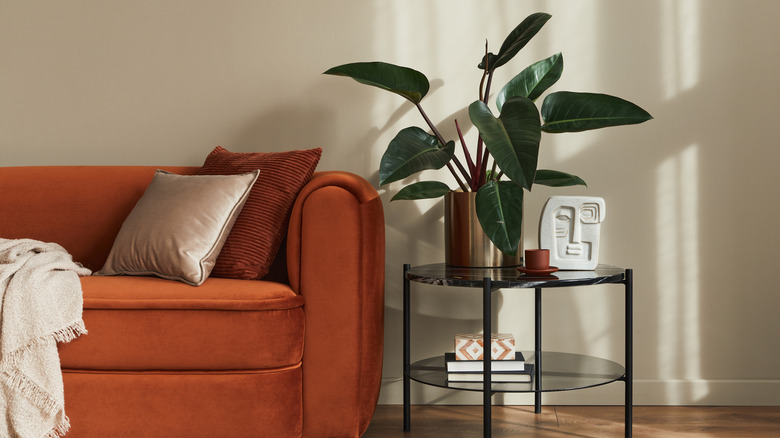Prevent Mold Growth Under A Flush Sofa With A Simple Hack
Low-profile sofas look sleek, modern, and cozy, but when they sit flush against the floor, they can become a hidden hotspot for mold.Without any space between the couch and the floorboards, there's no room for airflow, especially if your home is humid or you have hardwoods that trap moisture. Over time, this stagnant environment creates the perfect conditions for mold to grow underneath your furniture, often going unnoticed until it becomes a bigger issue.
To prevent mold from building up under your flush sofa, there's one simple and affordable solution: interlocking PVC deck tiles. These flexible, rubber-based tiles are usually used for patios and balconies, but they work perfectly indoors as an invisible buffer beneath your couch. They're only about half an inch thick, which is just enough to lift the frame and promote airflow without changing the look of your furniture.The tiles also have open holes throughout, which lets air circulate freely. Plus, they're made of grippy rubber, so they won't slide around. All you need is one or two packs depending on the length of your sofa and a box cutter. It's a set-it-and-forget-it way to protect your furniture and floor from mold, especially if you like your sofa snug against the ground. If you do end up noticing mold on your sofa, you can remove it with these handy home essentials.
How to lift your flush sofa and protect against mold with PVC tiles
Using the tiles is about as easy as it gets. Just lay them flat underneath your sofa area, click them together like puzzle pieces, and you're done. There's no glue, screws, or tools required. The low profile means they're practically invisible once your couch is in place, so you still get that sleek, grounded look without the risk of mold creeping in. A 12-pack of these tiles usually costs under $35, making this one of the easiest and most affordable ways to protect your floors and furniture long-term.
If your sofa is L-shaped or extra wide, you can trim the tiles with a box cutter to fit snugly underneath. Some brands also come in neutral or black tones so they blend better with your flooring. For added protection, consider pairing the tiles with a dehumidifier or placing a moisture absorber nearby if you live in a damp climate. You can even use leftover tiles in other problem areas, like under your bed or in storage closets, to increase ventilation and cut down on mustiness. If you've got any leftover PVC mats, you can upgrade your small balcony with deck tiles. It's a small hack that goes a long way in keeping your home clean, dry, and mold-free without sacrificing style. To keep your living room space nice and fresh, take a look at how often you need to clean your sofa.
